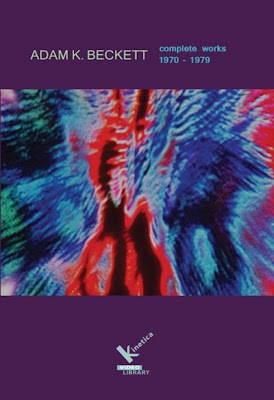This one sent in via Brian Comnes.
This is a direct copy and paste from the mailer to preserve all links, so please excuse any formatting glitches on this one.
EVERYTHING SYNTH

 via vgermuse
via vgermuse
Rehearsing JOHN CAGE - VARIATIONS VI from Giorgio Sancristoforo on Vimeo.
For a Plurality of Sound Systems (Buchla200e, Radio, Tape Recorder, Max/MSP)
Score available at Edition Peters
The score is made of symbols printed on transparent plastic sheets,
the symbols set the number of available and possible sound systems
(a sound system is made of speakers, generators and components such as filters, modulators, amplifiers).
The symbols are dropped on a white sheet painted with a straight black line.
The axis of each symbol states whether the component or generator must change
or stand still (% of amount of change). Some changes are done manually, some other are made by control voltage. Amplification and surround pan are controlled (following the score) by max/MSP.
At a certain point the radio went outside the FM band, making just clicks and pops... :)
Recorded in binaural simulation, use headphones.
 "Our Variation VII is a program focusing on Cage's most pioneering experimental, electronic, and noise music. Starting with early works utilizing 'non-musical' objects to generate sound [ Living Room Music (1940) and Radio Music (1956) ], we move to Cage's music for amplified objects from the early 60's. These works, epitomized by Cartridge Music (1960), feature graphic scores written on transparencies arranged by performers to realize various "events" amplified with contact microphones and phonograph cartridges. Although Cage was famously opposed to improvisation, these works require musicians who can make musical decisions based on real-time listening -- a skill honed by all the sfSound players!
"Our Variation VII is a program focusing on Cage's most pioneering experimental, electronic, and noise music. Starting with early works utilizing 'non-musical' objects to generate sound [ Living Room Music (1940) and Radio Music (1956) ], we move to Cage's music for amplified objects from the early 60's. These works, epitomized by Cartridge Music (1960), feature graphic scores written on transparencies arranged by performers to realize various "events" amplified with contact microphones and phonograph cartridges. Although Cage was famously opposed to improvisation, these works require musicians who can make musical decisions based on real-time listening -- a skill honed by all the sfSound players!John Cage 100 Anniversary Performance: Variations VI from Giorgio Sancristoforo on Vimeo.
"My performance of Variations VI at the John Cage Centennial Celebration
SEPT. 5th 2012 at Triennale Design Museum, Milano, Italy
Special thanks to:
Sandro Mussida
Elio Marchesini
Alessandra Novaga
HurlaJanus Ensemble
Inkyung Hwang
Christian Schmitz
Luca Rullo
Lorenzo Villa
Staff @ Triennale di Milano"
 A chance to see the Buchla 200e, Haken Continuum & Kyma System live.
A chance to see the Buchla 200e, Haken Continuum & Kyma System live.Swarm Controlled Sampler - Becoming Live from Evan Merz on Vimeo.
Swarm Music Album Black Allegheny from Evan Merz on Vimeo.
Swarm Controlled Sampler - Becoming Live from Evan Merz on Vimeo.

 "After years of work by the Iota Center, Pamela Turner, and Mark Toscano and the Academy of Motion Picture Arts and Sciences, the experimental animation work of Adam Beckett (1950-1979) has been remastered and released on a new DVD. Included in this DVD is Heavy-Light (1973), Adam's most abstract work.
"After years of work by the Iota Center, Pamela Turner, and Mark Toscano and the Academy of Motion Picture Arts and Sciences, the experimental animation work of Adam Beckett (1950-1979) has been remastered and released on a new DVD. Included in this DVD is Heavy-Light (1973), Adam's most abstract work. I was fortunate to be able score Heavy-Light, using one of CalArts' Buchla 200 systems, and it's great to see Adam's work restored and made available to the public. Also on this DVD is Evolution of the Red Star, with music by Carl Stone."
I was fortunate to be able score Heavy-Light, using one of CalArts' Buchla 200 systems, and it's great to see Adam's work restored and made available to the public. Also on this DVD is Evolution of the Red Star, with music by Carl Stone."
 This one in via Scott, via Bleep: "Bleep's guide to Electronic Music is a 55 track compilation charting the historical emergence of electronic music by looking at landmark tracks from the 1930s up to present day.
This one in via Scott, via Bleep: "Bleep's guide to Electronic Music is a 55 track compilation charting the historical emergence of electronic music by looking at landmark tracks from the 1930s up to present day.











